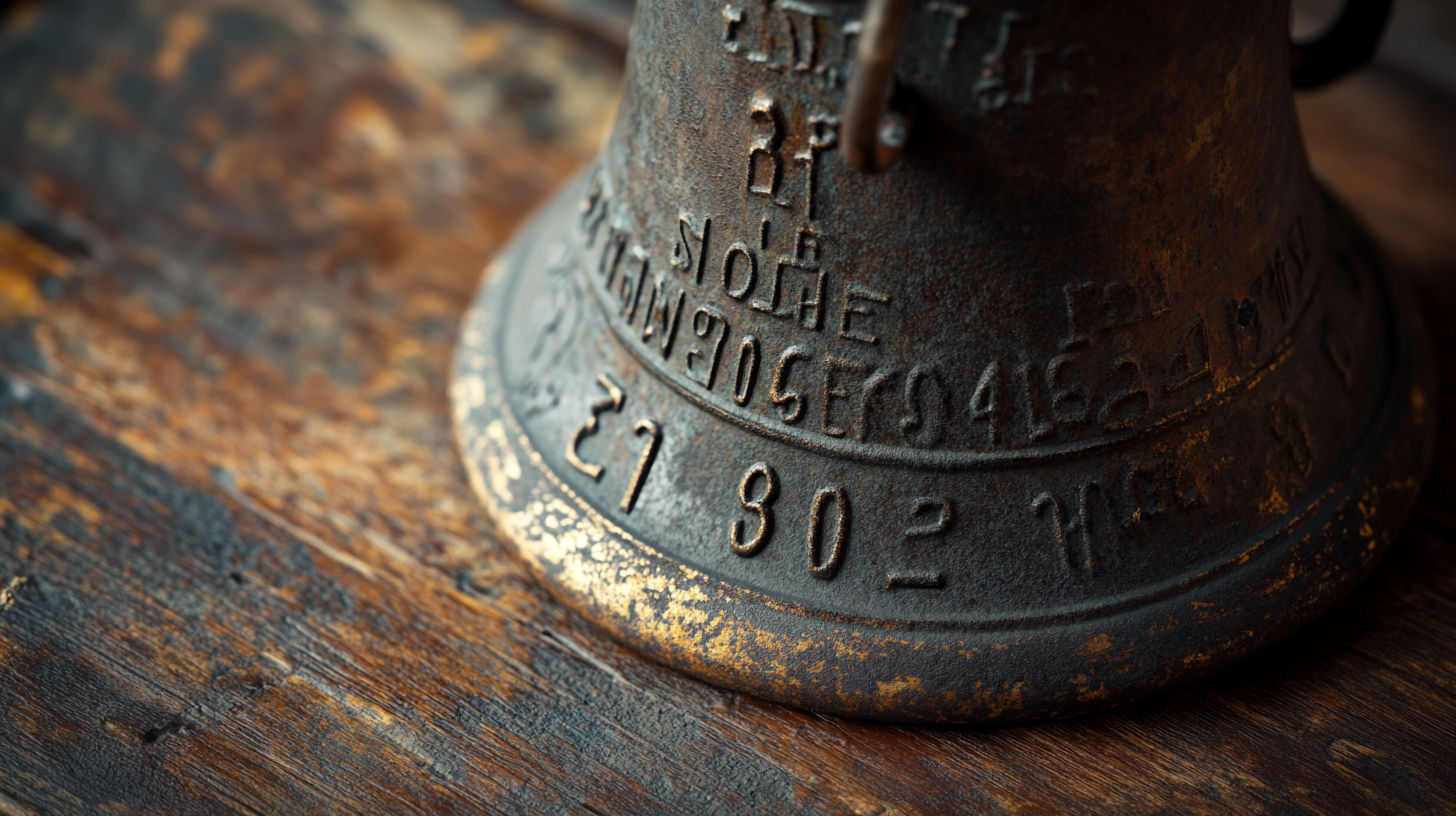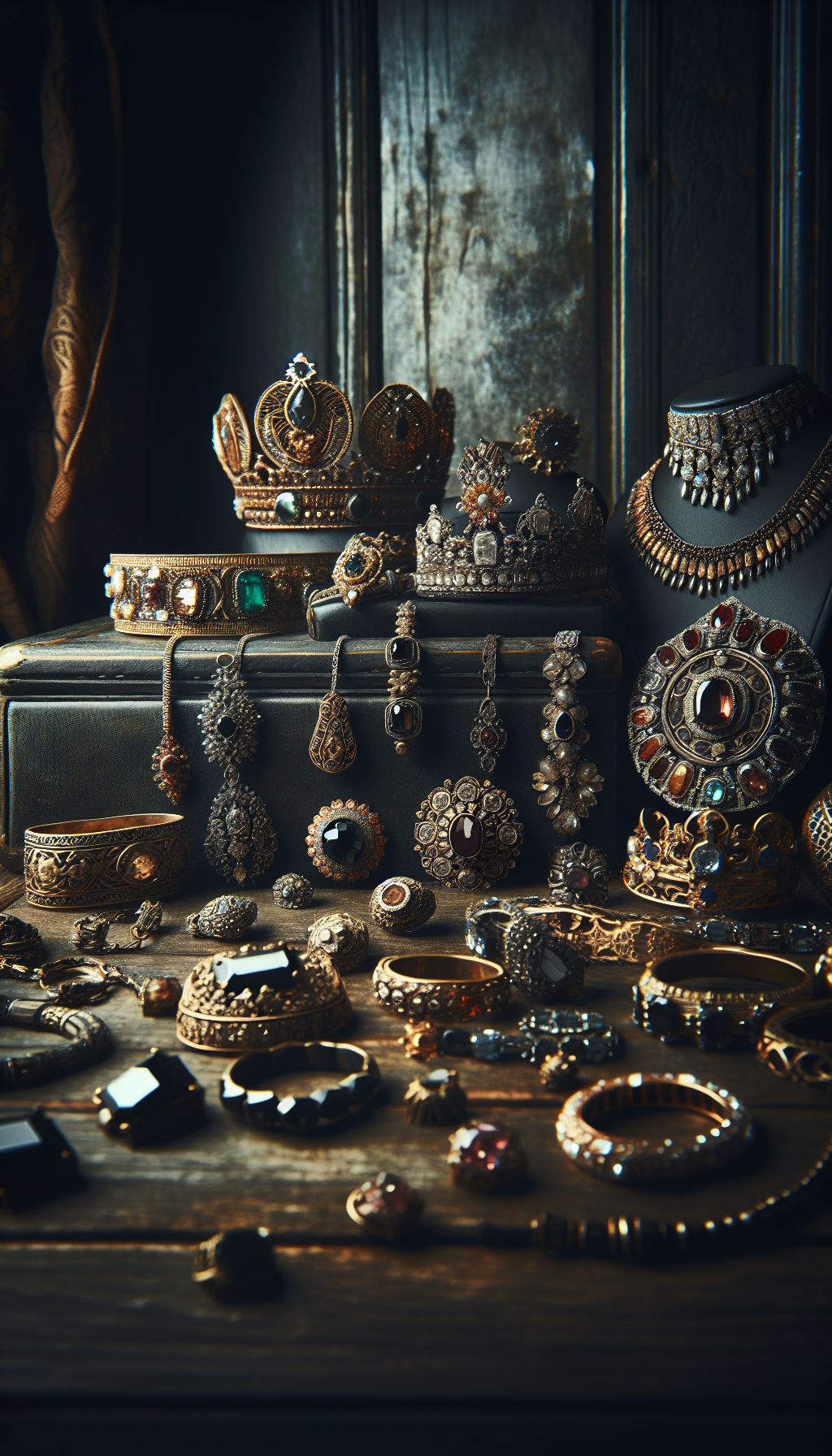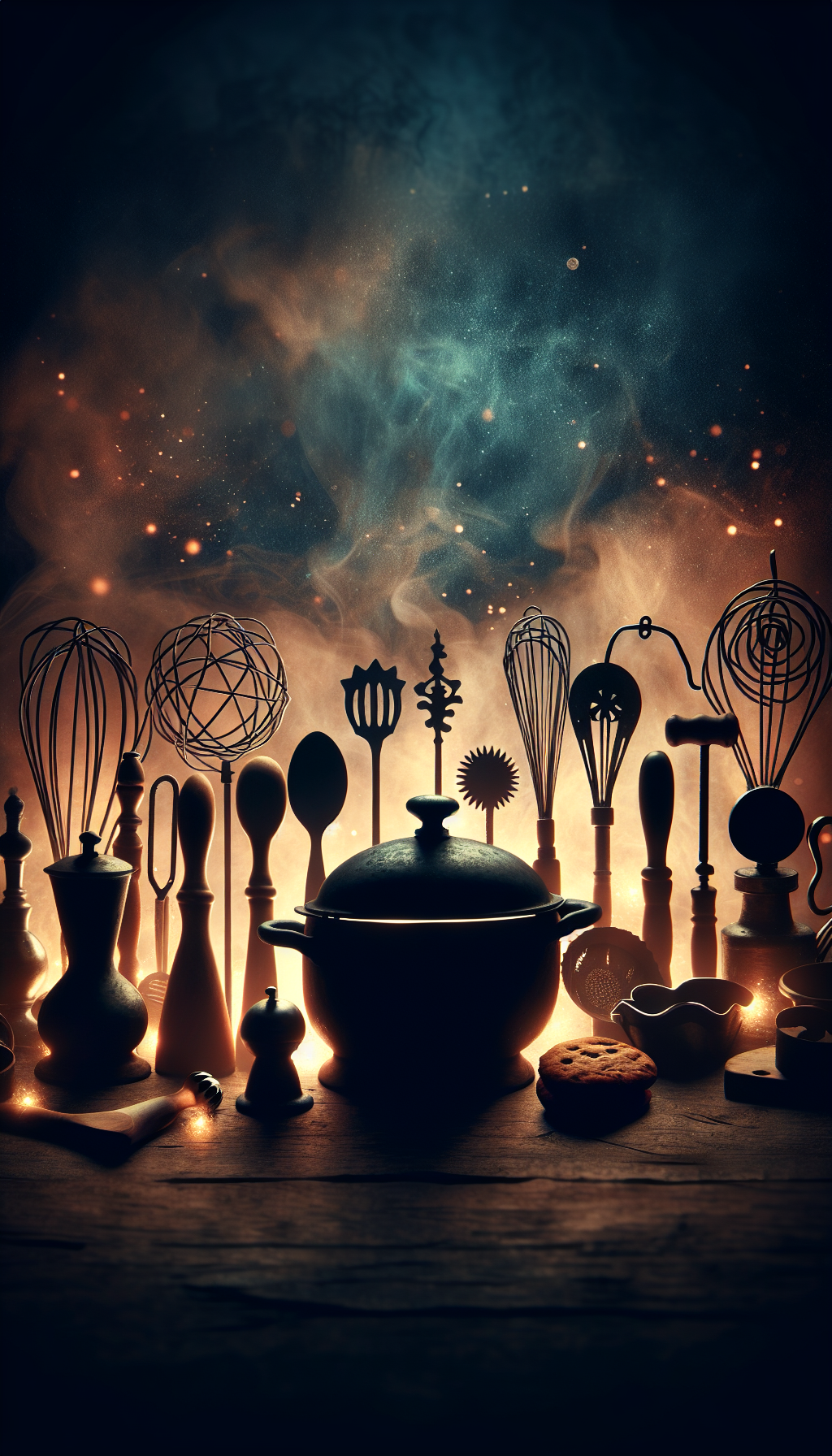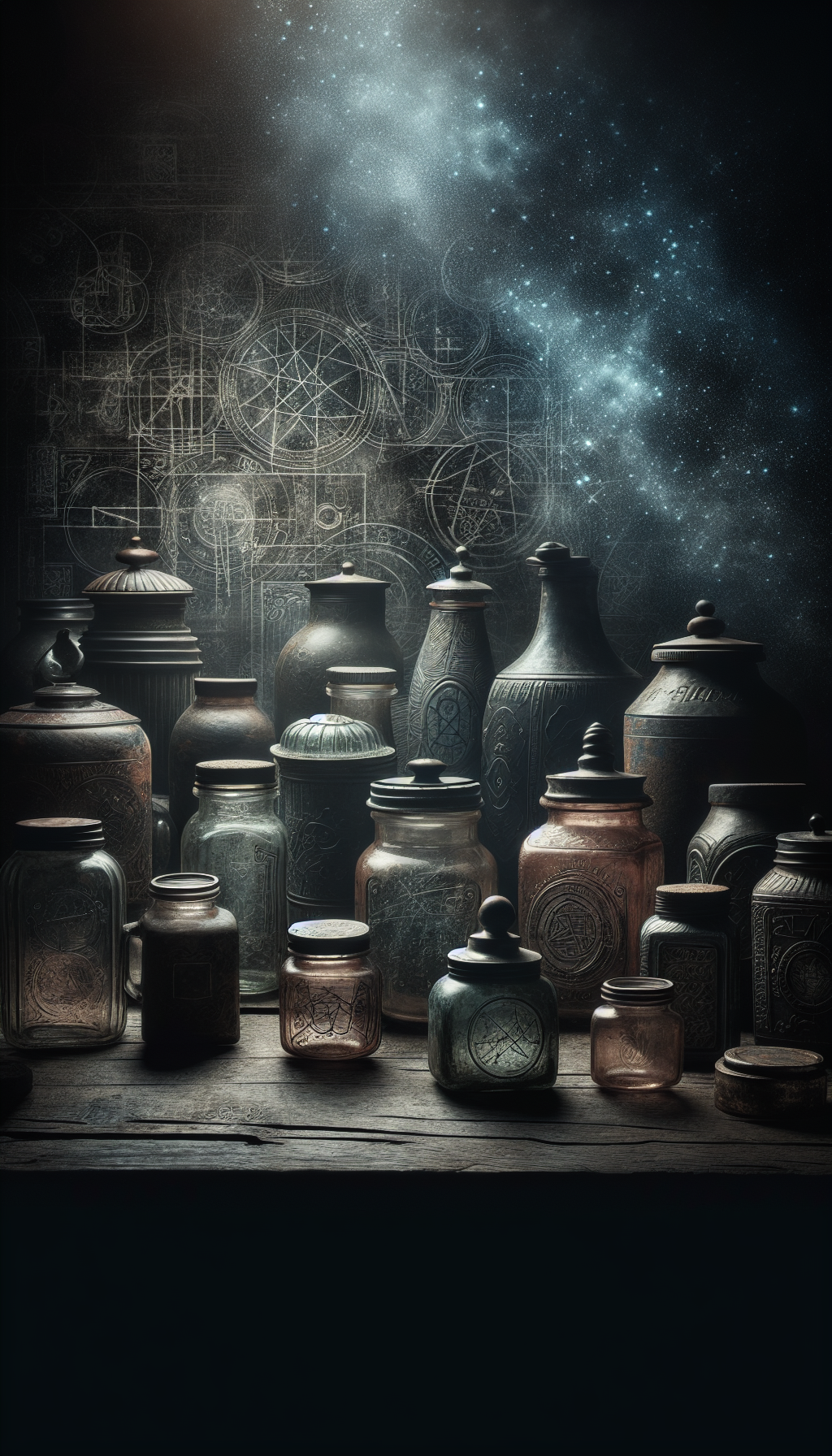Introduction to Antique Bells
Antique bells come in a fascinating variety of types, each with distinctive characteristics that help reveal their origin and age. Whether you’ve inherited a family heirloom, discovered an old bell at an estate sale, or are actively building a collection, this guide will provide the knowledge needed to properly identify and value these musical treasures from the past.
Antique Bell Market Insights
Types of Antique Bells
Sleigh Bells
Sleigh bells are perhaps the most recognizable type of antique bell, especially in North American collections. Traditionally used on horse harnesses and sleighs, these bells served both practical and decorative purposes. They alerted pedestrians to oncoming sleighs while also adding a festive sound to winter travels.
Antique American sleigh bells typically date from 1845 to 1920, with the most desirable examples featuring distinctive “petal” designs. These bells are characterized by their egg-like shape with intricate design work around the middle section.
Crotal Bells
Crotal bells, sometimes called rumbler bells, have a round shape with a pebble or metal ball inside that creates the sound. Dating back to the 16th century in Europe, these bells were commonly used for livestock, falconry, horse harnesses, and even as children’s toys.
According to the UK Detector Finds Database, many crotal bells carry maker’s marks, typically located at the center of the lower hemisphere, often within a cartouche or dedicated design area.
Cast Iron Bells
Cast iron bells include everything from school bells to farm dinner bells to ship’s bells. These substantial pieces were designed to project sound over distances, calling students to class or workers in from the field.
Antique cast iron bells often bear foundry marks that can help identify their age and origin. Major American bell manufacturers included Bevin Bros. Manufacturing, C.S. Bell Company, and Meneely Bell Foundry, among others.
Church and Tower Bells
The largest category of antique bells includes church bells, tower bells, and other large bronze bells. These monumental pieces were cast in specialized foundries and often feature elaborate inscriptions, dates, and maker’s marks.
Decorative and Souvenir Bells
A final category encompasses decorative and souvenir bells, which became particularly popular during the Victorian era and continued through the mid-20th century. These smaller bells were made from brass, silver, porcelain, and other materials.
Evolution of Bell Design and Production
- 16th Century
Early Crotal Bells
Cast bronze crotal bells emerge in Europe, primarily used for livestock and falconry - 1700s
American Bell Foundries
Early American bell founders establish operations, primarily casting church and ship bells - 1800-1845
Plain Sleigh Bells
Early American sleigh bells featured simple designs with minimal ornamentation - 1845-1880
Golden Age of Petal Bells
Intricate "petal" design sleigh bells become popular, with crisp, detailed patterns - 1880-1920
Mass Production Era
Industrial manufacturing techniques lead to wider availability but declining craftsmanship - 1950s-Present
Reproduction Period
Modern reproductions of antique bell styles flood the market, challenging collectors
Identifying Antique Sleigh Bells
Bell Shape and Design
Authentic antique sleigh bells from the late 1700s and early 1800s typically feature these characteristics:
- Petal Design: Most genuine antique bells have an intricate, crisp petal design (though some are plain)
- Egg Shape: Authentic bells are almost egg-shaped with only a gentle hump around the middle
- Base Holes: Look for two holes in the base of all bells
- Shell Thickness: Early bells have thinner shells than modern reproductions
Beyond the classic petal design, you might also encounter antique bells with raspberry or acorn shapes, each representing different manufacturing periods and regional styles.
Mounting and Straps
The way sleigh bells were mounted provides important clues to their age:
- Swedish Bells: Often mounted on leather straps with brass or iron brackets
- Petal Bells: Typically mounted by passing a leather strap through holes in the base
- Graduated Sizes: Authentic antique straps often feature a graduated arrangement with larger bells in the center
According to City Farmhouse Antiques, the most collectible bells were made between 1845 and 1920.
Patina and Wear
Authentic aging creates distinctive characteristics:
- Even Patination: Look for consistent coloration across the surface
- Natural Wear: Expect to see smoothed edges where the bell would naturally contact other surfaces
- Strap Wear: Leather straps should show appropriate aging and wear patterns at contact points
Antique Sleigh Bell Authentication Checklist
Use this checklist to evaluate potential antique sleigh bells
- Bell has egg shape with gentle middle hump
- Two holes present in the base
- Crisp, detailed petal design (if not plain)
- Even patination across all bells in set
- Thinner metal shell than modern reproductions
- Natural wear patterns consistent with age
- Leather strap shows appropriate aging
- No dramatic color variations between adjacent bells
Recognizing Crotal Bells
Design Evolution
According to The Detecting Hub, crotal bell design evolved in recognizable stages:
- Early Period (16th-17th century): Simple round balls with a single slit and crude suspension loops
- Georgian Period (18th century): More refined casting with decorative patterns and improved suspension loops
- Victorian Period (19th century): Often featured elaborate patterns including floral motifs, stars, and geometric designs
- Early 20th Century: Machine-made with more uniform appearance and standard sizes
Material and Patination
The composition of crotal bells helps indicate their age:
- Early Bells: Made from leaded bronze, often with a distinctive gray-white patination
- Later Bells: More clearly recognizable as copper alloy with characteristic green-brown patination
- Modern Reproductions: Often made from brass with artificially applied patina
Maker’s Marks
Many crotal bells carry maker’s marks or foundry stamps:
- Position: Typically located at the center of the lower hemisphere
- Cartouche: Often contained within a dedicated area of the design
- Common Marks: Include initials, simple symbols, or regional identifiers
Researching these marks can provide valuable information about origin and date of manufacture. Major bell founders often maintained distinctive marks across generations.
Cast Iron Bell Identification
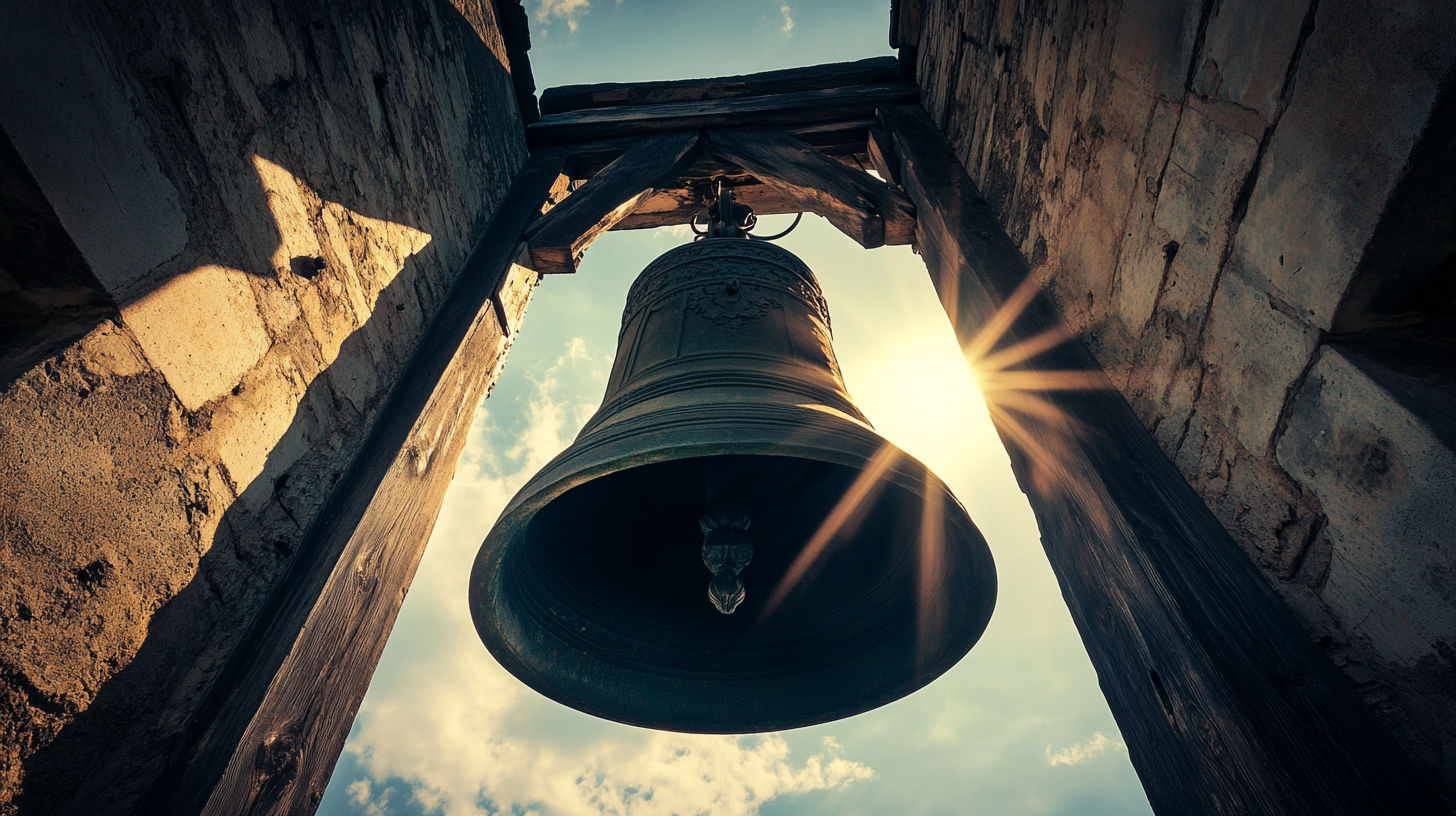
Foundry Marks and Inscriptions
The most reliable way to identify antique cast iron bells is through foundry marks:
- Location: Typically cast into the waist or crown of the bell
- Information: May include manufacturer name, city, patent dates, or model numbers
- Patent Dates: These provide the earliest possible date of manufacture, not necessarily when your specific bell was made
According to antique experts, major American bell foundries included:
- C.S. Bell Company (Hillsboro, Ohio)
- Bevin Bros. Manufacturing (East Hampton, Connecticut)
- Meneely Bell Foundry (Troy, New York)
- McShane Bell Foundry (Baltimore, Maryland)
Construction Methods
Physical construction details reveal important information:
- Casting Seams: Examine for visible mold lines and how they were finished
- Mounting Hardware: Original yokes, brackets, and hanging hardware indicate authenticity
- Surface Texture: Early cast iron has a distinctive texture different from modern castings
Dating by Design Features
Design elements evolved over time:
- Pre-1850: Generally simpler designs with less ornamentation
- 1850-1900: Peak period featuring more elaborate designs and patent-specific features
- Post-1900: More standardized designs as mass production increased
Antique Bell Value Ranges
Current market values based on type, age, and condition
</tbody>
</table>
Spotting Reproductions and Fakes
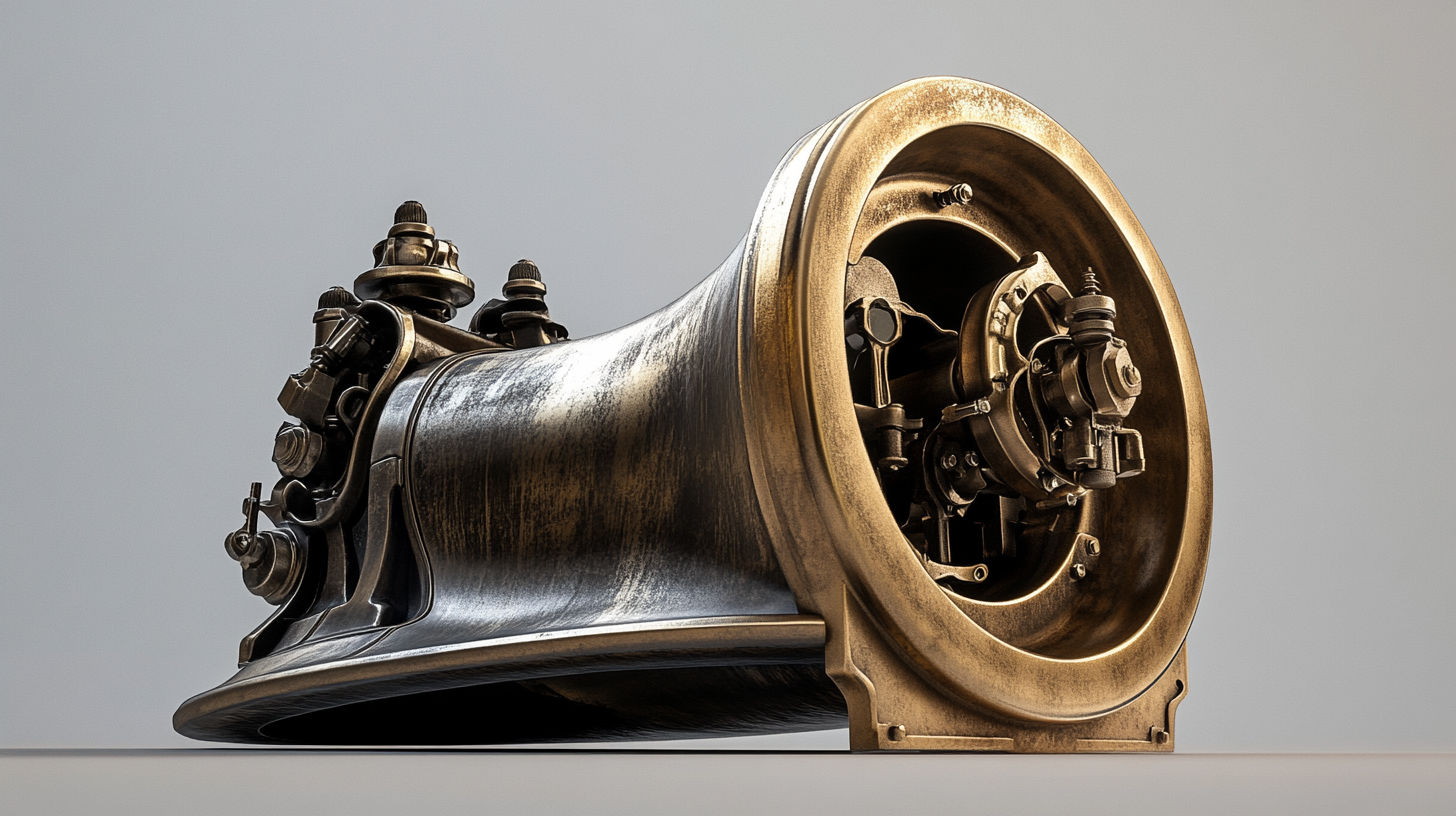
Common Signs of Reproduction Sleigh Bells
According to Classic Bells’ guide on fake sleigh bells, these indicators suggest a reproduction:
- Splotchy Coloration: Artificially aged bells often have uneven, splotchy color
- Color Variation: Wide variation in color between adjacent bells on a strap
- Heavy Construction: Reproductions typically use thicker, heavier metal than originals
- Crude Details: Less crisp, detailed designs compared to authentic antique bells
- Modern Materials: Synthetic straps or new leather with artificial aging
Artificially Aged Cast Iron Bells
For larger cast iron bells, watch for:
- Inconsistent Rust Patterns: Natural rust develops in predictable patterns based on exposure
- Modern Casting Techniques: Smoother, more uniform surfaces than historical casting methods
- Incorrect Hardware: Mounting hardware that doesn’t match the period of the bell
- Missing or Crude Markings: Reproductions often have poorly executed or missing foundry marks
Using Historical Knowledge
Understanding the historical context helps identify anachronisms:
- Design Inconsistencies: Features that wouldn’t have existed during the purported period
- Inappropriate Materials: Materials or alloys not available when the bell was supposedly made
- Manufacturing Techniques: Evidence of modern manufacturing methods
As one Reddit contributor noted in a discussion about brass bell identification, many decorative brass bells that appear old are actually mid-century pieces designed to look antique.
Valuation Factors for Antique Bells
Key Value Determinants
- Age and Rarity: Generally, older and rarer bells command higher prices
- Condition: Functionality, intact design elements, and original finish significantly impact value
- Provenance: Documented history, especially association with historical events or figures
- Completeness: For sets of bells, complete original sets are worth more than individual pieces
- Original Hardware: Bells with original mounting hardware maintain higher value
Material Considerations
Different materials age distinctively and affect value:
- Bronze Bells: Develop a desirable patina that should not be cleaned or polished
- Cast Iron: Some surface rust is expected, but structural rust decreases value
- Brass and Copper: Natural verdigris is often desirable on antique examples
Market Trends
According to collectors and auction data, certain types of bells are currently experiencing strong market interest:
- Early American Sleigh Bells: Particularly those with documented provenance
- 19th Century School Bells: Cast iron examples from known foundries
- Medieval and Renaissance Period Bells: Especially those with religious significance
- Specialized Bells: Bells with unique purposes (fire alarms, ships bells) often find specialized collectors
As noted in The Herald-Times, vintage bells continue to attract collectors interested in both their historical significance and decorative appeal.
Common Questions About Antique Bells
How can I tell if my sleigh bells are antique?
Authentic antique sleigh bells typically have these characteristics:
- Egg shape with only a gentle hump around the middle
- Two holes in the base
- Intricate, crisp petal design (though some are plain)
- Thinner metal shells than modern reproductions
- Even patination across the surface
Bells dating from 1845-1920 are considered the most collectible period. Look for natural wear patterns and avoid pieces with splotchy coloration, which often indicates artificial aging on reproductions.
How do you identify a crotal bell?
Crotal bells can be identified by:
- Their spherical shape with a pebble or metal ball inside
- Suspension loops on top for attachment
- Maker’s marks, usually found at the center of the lower hemisphere
- Patination: earlier bells have gray-white patina, while later ones show green-brown
- Design elements that evolved over time from simple slits to elaborate patterns
Early crotal bells (16th-17th century) are quite simple, while Victorian-era bells often featured decorative patterns including floral motifs, stars, and geometric designs.
What are the most valuable types of antique bells?
The most valuable antique bells generally include:
- Historic church and tower bells with documented provenance
- Pre-1850 American sleigh bells in original condition
- Early medieval bronze bells with religious significance
- Bells from famous foundries like Meneely or McShane
- Complete original sets of graduated sleigh bells on original straps
- Bells with unique historical connections or owned by notable figures
Condition is paramount for value, as is authentication by knowledgeable appraisers.
Should I clean my antique bell?
Generally, it's best NOT to clean antique bells. The natural patina that develops over time is considered desirable by collectors and can significantly contribute to the bell's value and authenticity. Cleaning or polishing can:
- Remove the valuable patina that took decades to develop
- Potentially damage the surface
- Reduce the value by 50% or more in some cases
If light cleaning is absolutely necessary, use only the gentlest methods appropriate for the specific material, and consider consulting a professional conservator for valuable pieces.
How can I tell if a cast iron bell is authentic?
To determine if a cast iron bell is authentic:
- Look for foundry marks cast into the waist or crown of the bell
- Check for patent dates that help establish manufacturing period
- Examine the casting quality and seams (hand-finished in antiques)
- Verify that mounting hardware matches the period
- Assess the weight and thickness (antiques often have thinner, more precisely cast walls)
- Look for natural wear patterns consistent with age and use
Reproduction bells often have inconsistent rust patterns, modern casting techniques, and may lack the detailed foundry markings of authentic pieces.
What are the most common types of antique sleigh bells?
Common types of antique sleigh bells include:
- Petal bells: Featuring intricate floral or geometric designs around the middle
- Acorn bells: Shaped like acorns with distinctive tops
- Raspberry bells: Featuring a bumpy surface resembling a raspberry
- Swedish bells: Usually larger and mounted with brass or iron brackets
The most commonly found antique sleigh bells in America date from 1845-1920, with the earlier examples (pre-1880) typically showing superior craftsmanship and more detailed designs.
Conservation and Care
General Handling Principles
- Minimal Intervention: The less done to an antique bell, the better
- Stable Environment: Store bells in areas with consistent temperature and humidity
- Support: Always provide adequate support when displaying heavy bells
- Documentation: Keep records of any conservation efforts and the bell’s provenance
Material-Specific Care
Different bell materials require specific approaches:
Bronze and Brass
- Avoid Cleaning: The patina is valuable and should be preserved
- No Polish: Chemical polishes remove patina and can damage the surface
- Dust Gently: Use a soft brush for dust removal only
- Handling: Wear cotton gloves to prevent oils from transferring to the surface
Cast Iron
- Stabilization: Prevent further rust with minimal intervention
- Light Oil: For severe environmental exposure, consider a light application of museum-grade oil
- No Sandblasting: Avoid aggressive rust removal techniques
- Support: Ensure adequate support for hanging to prevent stress on aging metal
Leather Straps and Fittings
- Conditioning: Occasional treatment with appropriate leather conditioners
- Storage: Keep leather out of direct sunlight
- Support: Provide proper support to prevent stretching or stress
As the Herald-Times article on vintage bells notes, many collectors prefer to display their bells rather than use them, which helps preserve these historical artifacts for future generations.
External Resources for Bell Identification and Valuation
Classic Bells: Dating Sleigh Bells
Comprehensive guide to identifying authentic antique sleigh bells, with detailed information on design evolution and authentication techniques.
UK Detector Finds Database: Crotal Bells
Extensive database of historical crotal bells with identification information, dating techniques, and typical markings found on authentic examples.
The Detecting Hub: Dating Crotal Bells
Expert discussion on dating techniques for crotal bells found in the UK, with chronological guidelines for different design features.
City Farmhouse Antiques: Identifying Antique Sleigh Bells
Collector's guide to identifying authentic antique sleigh bells with information on common shapes, designs, and manufacturing periods.
TreasureNet: Bell Identification Forum
Community forum where experts and collectors share knowledge about identifying various types of antique bells.
Classic Bells: Identifying Fake Sleigh Bells
Important resource for identifying reproductions and artificially aged bells in the marketplace.
The Herald-Times: Vintage Bells Article
Overview of bell collecting with insights into current market trends and collector interests.
Conclusion: The Enduring Appeal of Antique Bells
The study of antique bells connects us to daily life across centuries—from the practical use of signaling devices to the celebratory sounds that marked special occasions. By learning to recognize authentic period features, construction techniques, and appropriate patination, collectors can build meaningful collections while avoiding the reproductions that flood today’s market.
Remember that the most valuable bells are those with documented provenance, excellent condition, and historical significance. Whether you’re inheriting a family heirloom or actively building a collection, the knowledge shared in this guide provides a foundation for appreciating these resonant connections to our past.
For those passionate about bell collecting, joining specialist collector groups and forums can provide ongoing education and authentication assistance. The world of antique bells rewards patient study and careful observation—skills that develop over time just as surely as the beautiful patina that adorns these historical treasures.
Get a Professional Appraisal
Unsure about your item’s value? Our certified experts provide fast, written appraisals you can trust.
- Expert report with photos and comps
- Fast turnaround
- Fixed, upfront pricing
No obligation. Secure upload.
| Category | Price | Notes |
|---|---|---|
| Antique Petal Sleigh Bells (1845-1880) | $75-$300 per bell | Premium for original straps, complete sets |
| Victorian Crotal Bells (1800s) | $50-$250 | Value increases with clear maker's marks |
| Cast Iron Farm Bells (1850-1900) | $250-$1,500 | Size, condition, and foundry determine value |
| Church/Tower Bells (Pre-1900) | $1,000-$25,000+ | Historical significance greatly impacts value |
| Decorative Brass Bells (1900-1950) | $25-$200 | Collectible but not rare |
